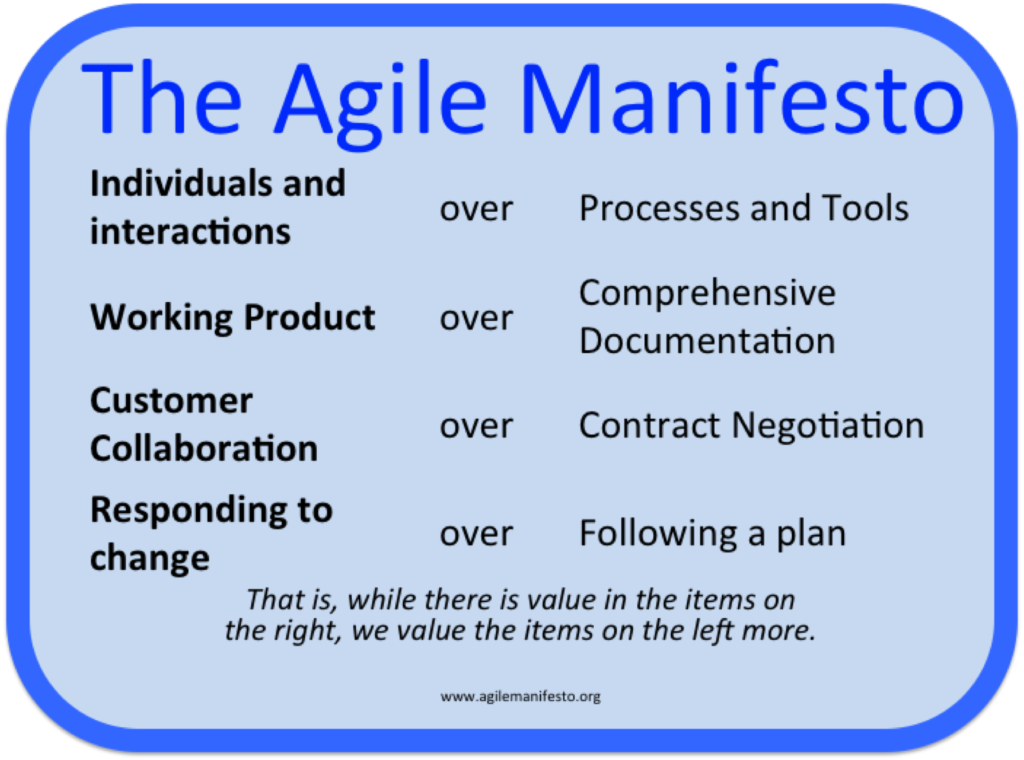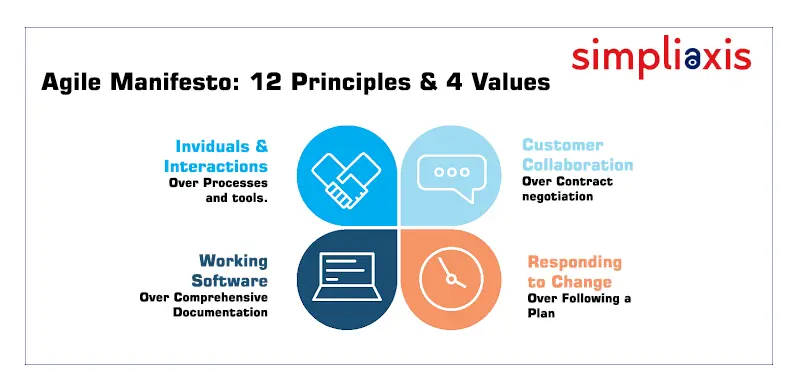
Agile Manifesto A History
Agile Manifesto A History
How The Agile Manifesto Came To Be is a captivating article that outlines the creation of the Agile Manifesto by 17 software experts in Utah in February 2001. This manifesto aimed to revolutionise software development practices by prioritising individuals and interactions over processes and tools, emphasising early and regular delivery of working software, and promoting customer collaboration over contract negotiation. The article also highlights the development of the manifesto’s principles, the dominance of the Scrum process in agile development, and the global expansion of Agile and Scrum as a powerful force in the software industry.
Speak to MCTC today about our consultancy advice and training packages.
Background
In February 2001, a group of 17 software experts gathered at a ski resort in Utah for a meeting that would change the landscape of software development. The main driving force behind this meeting was the recognition of the need for a shift in the way software development was being done. Traditional processes were often seen as cumbersome and inefficient, leading to delays and unsatisfied customers.
During this meeting, the term “Agile” was proposed as a way to describe this new approach to software development. The inspiration for this term came from a book on lean hardware companies, which emphasised the importance of adaptability and efficiency in manufacturing. The participants felt that the principles of lean manufacturing could also be applied to software development, leading to increased productivity and customer satisfaction.
The Agile Manifesto
The Agile Manifesto, written during the meeting in February 2001, outlines the key values and principles of the Agile approach to software development. It emphasises the importance of individuals and interactions over processes and tools. This means that the focus should be on creating a collaborative and productive working environment, where team members can communicate effectively and work together towards a common goal.
Another key value of the Agile Manifesto is early and regular delivery of working software. This means that instead of waiting until the end of a project to deliver a finished product, Agile teams aim to deliver working software in small increments throughout the development process. This allows for frequent feedback from customers, which can then be used to make improvements and ensure that the final product meets their needs.
Customer collaboration is also highlighted as a crucial aspect of Agile development. Rather than relying solely on formal contracts and negotiations, Agile teams seek to actively involve customers in the development process. This collaboration helps ensure that the software being developed meets the customers’ expectations and provides value to their businesses.
The Agile Manifesto was approved by the participants of the meeting without any modifications, demonstrating the unanimous agreement on the core principles of Agile development.

This image is property of blog.itil.org.
Writing the Manifesto
The Agile Manifesto was written on a whiteboard in just 15 minutes by eight of the participants at the meeting. This efficient whiteboard session allowed for quick brainstorming and immediate agreement on the wording of the manifesto. The participants felt that the concepts and values expressed on the whiteboard accurately captured their vision for Agile development.
Principles of the Manifesto
Following the creation of the Agile Manifesto, the participants spent the afternoon developing the 12 principles that would further amplify and clarify the values expressed in the manifesto. These principles serve as guidelines for Agile teams to follow in their development processes:
- Customer satisfaction through early and continuous delivery of valuable software.
- Welcome changing requirements, even late in development. Agile processes harness change for the customer’s competitive advantage.
- Deliver working software frequently, with a preference for the shorter timescale.
- Business people and developers must work together daily throughout the project.
- Build projects around motivated individuals. Give them the environment and support they need, and trust them to get the job done.
- The most efficient and effective method of conveying information to and within a development team is face-to-face conversation.
- Working software is the primary measure of progress.
- Agile processes promote sustainable development. The sponsors, developers, and users should be able to maintain a constant pace indefinitely.
- Continuous attention to technical excellence and good design enhances agility.
- Simplicity, the art of maximising the amount of work not done, is essential.
- The best architectures, requirements, and designs emerge from self-organising teams.
- At regular intervals, the team reflects on how to become more effective, then tunes and adjusts its behaviour accordingly.
These principles provide a framework for Agile development and serve as a guideline for teams to follow. They encourage collaboration, flexibility, and continuous improvement, ultimately leading to the successful delivery of high-quality software.

This image is property of www.simpliaxis.com.
Scrum Dominance
While the Agile Manifesto itself does not advocate for any specific development process, one approach that gained significant prominence in the Agile community is Scrum. Scrum is an iterative and incremental framework for managing complex projects, often associated with Agile development.
Scrum’s emphasis on self-organisation, cross-functional teams, and regular feedback aligns well with the values and principles of Agile development. As a result, Scrum became the dominant Agile process, widely adopted by teams around the world.
However, it is important to note that other approaches, such as Crystal and Extreme Programming, played crucial roles in the Agile movement. These approaches also embraced the Agile values and principles and offered their unique perspectives on software development.
Global Expansion
Following the creation of the Agile Manifesto, the use of Agile and Scrum expanded rapidly worldwide. The principles and practices advocated by Agile teams gained traction in various industries, not limited to software development.
Agile principles were found to be applicable in industries beyond technology, including marketing, manufacturing, and healthcare. The flexibility and adaptability of Agile methods allowed organisations to respond to changing market demands and deliver value to their customers more effectively.
Today, Agile has become a global phenomenon, with companies of all sizes and industries adopting Agile practices. The Agile mindset has revolutionised software development and has proven its value in today’s fast-paced and customer-centric business environment.

This image is property of project-management.com.
Conclusion
The Agile Manifesto, written in February 2001, marked a significant turning point in the world of software development. It emphasised the importance of individuals and interactions, early and regular delivery of working software, and customer collaboration. These values and principles have shaped the way teams approach software development and have led to increased productivity and customer satisfaction.
Agile and Scrum have expanded rapidly, becoming global phenomena that transcend traditional software development. The principles and practices of Agile offer a framework for teams in various industries to respond to change, collaborate effectively, and deliver value to their customers.
In today’s rapidly evolving business environment, the importance of Agile and its principles cannot be overstated. Organisations seeking to stay competitive and deliver customer-centric solutions recognise the need for Change & Transformation consultancy and training to embrace the Agile mindset and capitalise on its benefits. With Agile, businesses can navigate uncertainty, adapt to change, and thrive in a dynamic marketplace.
